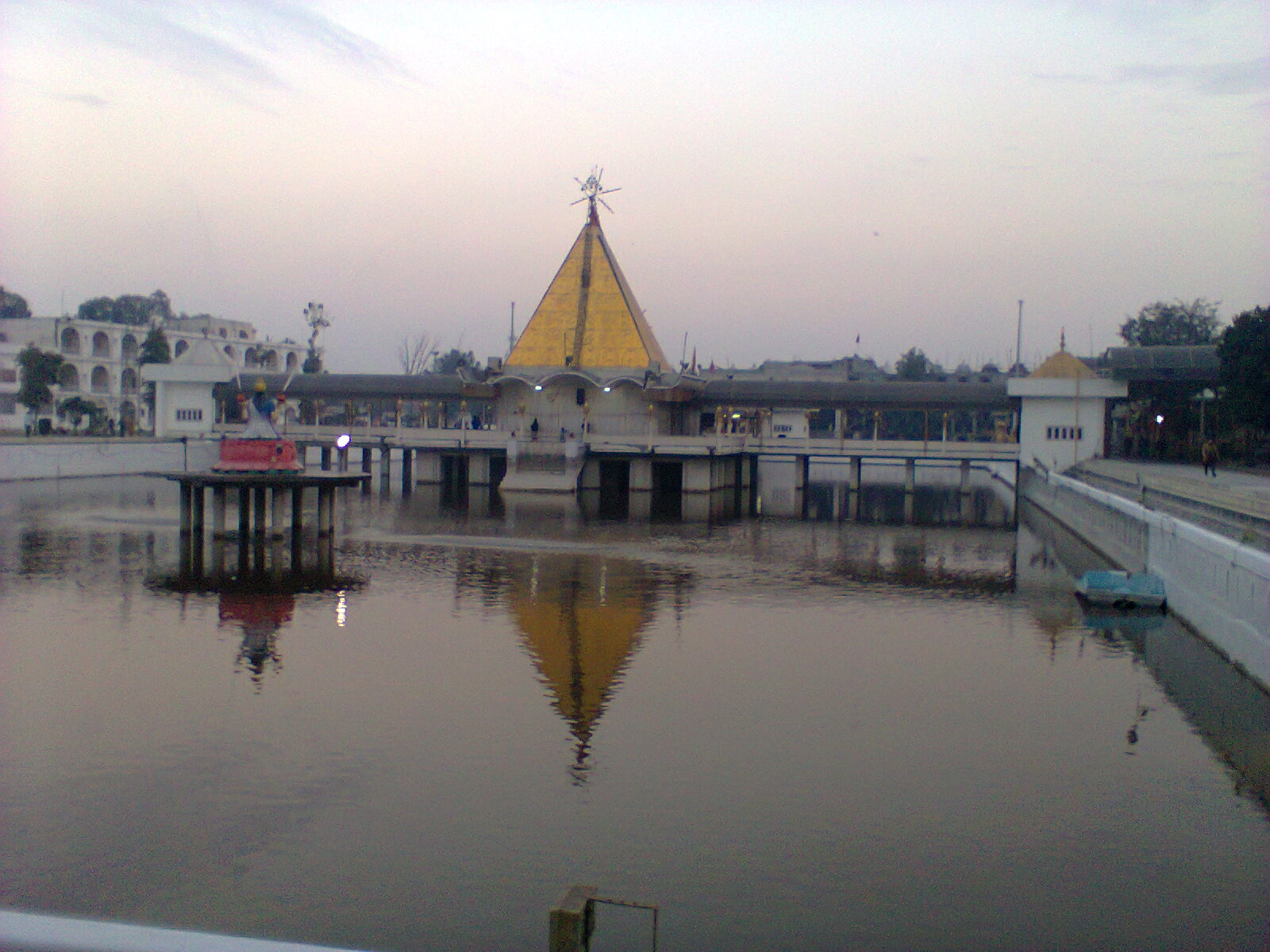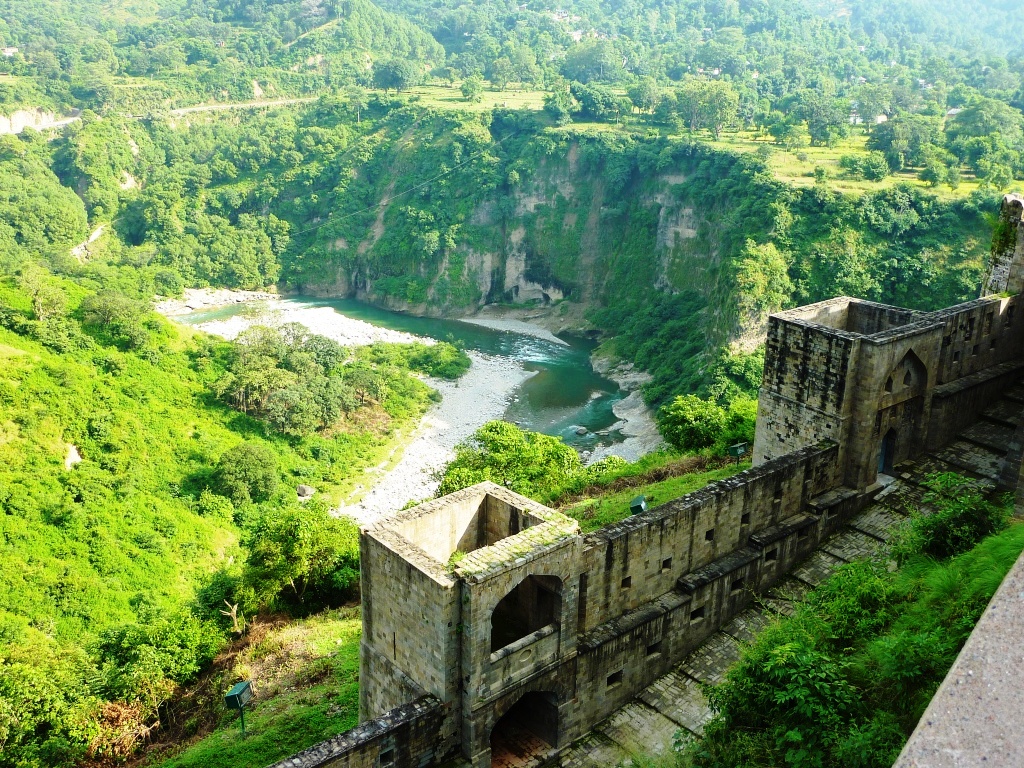|
Hinduism In Punjab, Pakistan
Hinduism is a minority religion in Punjab province of Pakistan followed by about 0.2% of its population. Punjab has the second largest number of Hindus in Pakistan after Sindh. Hinduism is followed mainly in the Southern Punjab districts of Rahim Yar Khan and Bahawalpur. History The Rig Veda, the oldest and sacred Hindu text, is believed to have been composed in the Punjab region of modern-day Pakistan (and India) on the banks of the Indus River around 1500 BCE. The Punjab region also features heavily in the Mahabharata. According to Hindu religious texts, Multan was founded by the Hindu sage Kashyapa and also asserts Multan as the capital of the Trigarta Kingdom ruled by the Katoch dynasty at the time of the Kurukshetra War that is central the Hindu epic poem, the ''Mahabharata''. Historically, the Hindu Punjabis and Saraiki Hindus followed mainly a non-Brahmanical form of Hinduism. The Prahladpuri Temple in Multan is believed to be constructed by Prahlada in honor of Nar ... [...More Info...] [...Related Items...] OR: [Wikipedia] [Google] [Baidu] |
Cholistan Desert
The Cholistan Desert ( ur, ; Punjabi: ), also locally known as Rohi (), is a desert in the southern part of Punjab, Pakistan that forms part of the Greater Thar Desert, which extends to Sindh province and the Indian state of Rajasthan. It is one of two large deserts in Punjab, the other being the Thal Desert. The name is derived from the Turkic word ''chol'', meaning "sands," and ''istan'', a Persian suffix meaning "land of." In ancient times, Cholistan was a fertile region with a large river fed by meltwater from the Himalayas, and so has a high density of ancient settlements from the Indus Valley civilization period dating back as early as 4000 BCE. The region later became a center for caravan trade, leading to the construction of numerous forts in the medieval period to protect trade routes - of which the Derawar Fort is the best-preserved example. Geography Cholistan covers an area of in the Bahawalpur, Bahawalnagar, and Rahim Yar Khan districts of southern Punjab. T ... [...More Info...] [...Related Items...] OR: [Wikipedia] [Google] [Baidu] |
Narasimha
Narasimha ( sa, नरसिंह, lit=man-lion, ), sometimes rendered Narasingha, is the fourth avatar of the Hindu god Vishnu. He is regarded to have incarnated in the form of a part-lion, part-man being to slay Hiranyakashipu, to end religious persecution and calamity on earth, thereby restoring dharma. Narasimha is often depicted with three eyes, and is described in Vaishnavism to be the God of Destruction; he who destroys the entire universe at the time of the great dissolution (Mahapralaya). Hence, he is known as Kala (time) or Mahakala (great-time), or Parakala (beyond time) in his epithets. There exists a matha (monastery) dedicated to him by the name of Parakala Matha in the Sri Vaishnava tradition. Narasimha is also described as the God of Yoga, in the form of Yoga-Narasimha. Narasimha iconography shows him with a human torso and lower body, with a leonine face and claws, typically with the asura Hiranyakashipu in his lap, whom he is in the process of defeating. T ... [...More Info...] [...Related Items...] OR: [Wikipedia] [Google] [Baidu] |
Prahlada
Prahlada () is an asura king in Hindu mythology. He is known for his staunch devotion towards the preserver deity, Vishnu. He appears in the narrative of Narasimha, the man-lion avatar of Vishnu, who rescues Prahlada by slaying his wicked father, Hiranyakashipu. Prahlada is described as a saintly boy, known for his innocence and bhakti to Vishnu. Despite the abusive nature of his father, Hiranyakashipu, he continues to worship Vishnu. He is considered to be a ''mahājana'', or great devotee, by followers of Vaishnava traditions. A treatise is accredited to him in the Bhagavata Purana, in which Prahlada describes the process of his loving worship towards Vishnu. The majority of stories in the Puranas regarding him are based on the activities of Prahlada as a young boy, and he is usually depicted as such in paintings and illustrations. Legend Prahlada was born to Kayadhu and Hiranyakashipu, an evil daitya king who had been granted a boon that he could not be killed off by ... [...More Info...] [...Related Items...] OR: [Wikipedia] [Google] [Baidu] |
Prahladpuri Temple, Multan
Prahladpuri Temple ( ur, ) was a Hindu temple located in Multan city of Punjab province in Pakistan, adjacent to the Shrine of Bahauddin Zakariya. Named after Prahlada, it is dedicated to the Hindu deity Narasimha. The temple is in ruins, since its destruction in 1992 by a Muslim mob in retaliation for the demolition of the Babri Masjid in Ayodhya, India and the site is currently owned by Evacuee Trust Property Board. Survey & Studies for Conservation of Historical Monuments of Multan. Department of Archeology & Museums, Ministry of Culture, Government of Pakistan Location The temple is located on top of a raised platform (mandapa) in the southern tip of the Fort of Multan, adjacent to the venerated tomb of Baha’ul Haq Zakariya. History Hindu Folklore In Hindu folklore, the original temple was built by Prahlada —son of the Asur-king of Multan— in honor of Narsing Avatara of Vishnu, when he appeared out of a pillar to disembowel Hiranyakashipu and reward Prahlada' ... [...More Info...] [...Related Items...] OR: [Wikipedia] [Google] [Baidu] |
Punjabi Hindus
Punjabi Hindus are adherents of Hinduism who identify linguistically, culturally, and genealogically as Punjabis. While Punjabi Hindus are mostly found in the Indian state of Punjab today, many have ancestry from the greater Punjab region, an area that was partitioned between India and Pakistan in 1947. History Ancient The Punjabi people first practiced proto-Hinduism, the oldest recorded religion in the Punjab region. The historical Vedic religion constituted the religious ideas and practices in the Punjab during the Vedic period (1500–500 BCE), centered primarily in the worship of Indra. The bulk of the Rigveda was composed in the Punjab region between circa 1500 and 1200 BCE, while later Vedic scriptures were composed more eastwards, between the Yamuna and Ganges rivers. An ancient Indian law book called the Manusmriti, developed by Brahmin Hindu priests, shaped Punjabi religious life from 200 BCE onward. British colonial era Prominent Indian nationalists f ... [...More Info...] [...Related Items...] OR: [Wikipedia] [Google] [Baidu] |
Kurukshetra War
The Kurukshetra War ( sa, कुरुक्षेत्र युद्ध ), also called the Mahabharata War, is a war described in the ''Mahabharata ( sa, महाभारत )''. The conflict arose from a dynastic succession struggle between two groups of cousins, the Kauravas and the Pandavas, for the throne of Hastinapura. The war laid the foundation for the ''Bhagavad Gita''. The historicity of the war remains the subject of scholarly discussion. The Battle of the Ten Kings, mentioned in the ''Rigveda'', may have formed the core of the Kurukshetra war's story. The war was greatly expanded and modified in the ''Mahabharata'''s account, which makes it dubious. Attempts have been made to assign a historical date to the Kurukshetra war, with research suggesting BCE. However, popular tradition claims that the war marks the transition to the ''Kali Yuga,'' dating it to BCE. The war took place in Kurukshetra. Despite only spanning eighteen days, the war takes more than ... [...More Info...] [...Related Items...] OR: [Wikipedia] [Google] [Baidu] |
Katoch
Katoch is a Chandravanshi Rajput clan. Their traditional area of residence was in the Trigarta Kingdom, based at Jalandhar and at Kangra Fort in the Indian state of Himachal Pradesh. They descent from the Trigarta dynasty mentioned in the Mahabharata. Famous subclans came into existence from Katoch Rajputs are Dadwal Dynasty, Guleria Dynasty, Sibaia Dynasty, Chib Dynasty, Jaswal Dynasty. Etymology There are two possible origins for the word ''Katoch''. Members of the clan say it comes from the words ''Kat'' (army) and ''uch'' (upper class) but other sources say that it comes from ''kot'' (fort). The Kangra fort was known as Nagarkot or Kot Kangra, and since the administrators/rulers resided within that particular ''kot'' they were vernacularly called "Kot'ch" or कोटच, which means ''those within the fort''. This over time became Katoch. History The main branch of the Katoch clan were the rulers of the Kangra State, which was, by some accounts, the most prominent kingd ... [...More Info...] [...Related Items...] OR: [Wikipedia] [Google] [Baidu] |
Trigarta Kingdom
Trigarta kingdom was an ancient kingdom in northern Indian region of the Indian subcontinent with its capital at Prasthala (modern Jalandhar), Multan and Kangra, Himachal Pradesh, Kangra. Trigarta was founded and ruled by the vrishni Dynasty. Mention in Mahabharata Trigarta was a kingdom mentioned in the epic Mahabharata. Mahabharata mentions two different Trigarta kingdoms, one in the west close to the Sivi Kingdom and the other north to the Kuru Kingdom. Modern Kangra district, Kangra is one of the ancient town in North Trigarta, extending westward to the Punjab area. Multan was the capital of Trigarta with its original name that is Mulasthan. The territory of Trigarta Kingdom is around the three rivers of Satluj, Beas, and Ravi. These Trigarta kings were allies of Duryodhana and enemies of Pandavas and Viratas. Their capital was named Prasthala. They attacked the Virata Kingdom aided by the Kurus to steal cattle from there. The Pandavas living there in anonymity helped the Vir ... [...More Info...] [...Related Items...] OR: [Wikipedia] [Google] [Baidu] |
Kashyapa
Kashyapa ( sa, कश्यप}, ) is a revered Vedas, Vedic Sage (philosophy), sage of Hinduism., Quote: "Kasyapa (Rudra),(Vedic Seer)..." He is one of the Saptarishis, the seven ancient sages of the ''Rigveda''. Kashyapa is the most ancient and venerated Rishi, rishi, along with the other Saptarishis, listed in the colophon verse in the ''Brihadaranyaka Upanishad''. Kashyapa is an ancient name, referring to many different personalities in the ancient Hindu and Buddhist texts. The place Kashmir is named after him, as well as numerous other Sanskrit texts and Indian scriptures. Name Kashyapa means "turtle" in Sanskrit. According to Michael Witzel, it is related to Avestan ''kasiiapa'', Sogdian language, Sogdian ''kyšph'', New Persian ''kašaf'', ''kaš(a)p'' which mean "tortoise", after which Kashaf Rūd or a river in Turkmenistan and Khorasan is named. Other relations include to Tocharian languages, Tokarian B ''kaccāp'' ("brainpan"), Tocharian languages, Tokarian A ''kā ... [...More Info...] [...Related Items...] OR: [Wikipedia] [Google] [Baidu] |
Mahabharata
The ''Mahābhārata'' ( ; sa, महाभारतम्, ', ) is one of the two major Sanskrit epics of ancient India in Hinduism, the other being the ''Rāmāyaṇa''. It narrates the struggle between two groups of cousins in the Kurukshetra War and the fates of the Kaurava and the Pāṇḍava princes and their successors. It also contains philosophical and devotional material, such as a discussion of the four "goals of life" or ''puruṣārtha'' (12.161). Among the principal works and stories in the ''Mahābhārata'' are the '' Bhagavad Gita'', the story of Damayanti, the story of Shakuntala, the story of Pururava and Urvashi, the story of Savitri and Satyavan, the story of Kacha and Devayani, the story of Rishyasringa and an abbreviated version of the ''Rāmāyaṇa'', often considered as works in their own right. Traditionally, the authorship of the ''Mahābhārata'' is attributed to Vyāsa. There have been many attempts to unravel its historical growth and c ... [...More Info...] [...Related Items...] OR: [Wikipedia] [Google] [Baidu] |
Indus River
The Indus ( ) is a transboundary river of Asia and a trans-Himalayan river of South and Central Asia. The river rises in mountain springs northeast of Mount Kailash in Western Tibet, flows northwest through the disputed region of Kashmir, Quote: "Kashmir, region of the northwestern Indian subcontinent. It is bounded by the Uygur Autonomous Region of Xinjiang to the northeast and the Tibet Autonomous Region to the east (both parts of China), by the Indian states of Himachal Pradesh and Punjab to the south, by Pakistan to the west, and by Afghanistan to the northwest. The northern and western portions are administered by Pakistan and comprise three areas: Azad Kashmir, Gilgit, and Baltistan, ... The southern and southeastern portions constitute the Indian state of Jammu and Kashmir. The Indian- and Pakistani-administered portions are divided by a "line of control" agreed to in 1972, although neither country recognizes it as an international boundary. In addition, China became ... [...More Info...] [...Related Items...] OR: [Wikipedia] [Google] [Baidu] |






.png)


